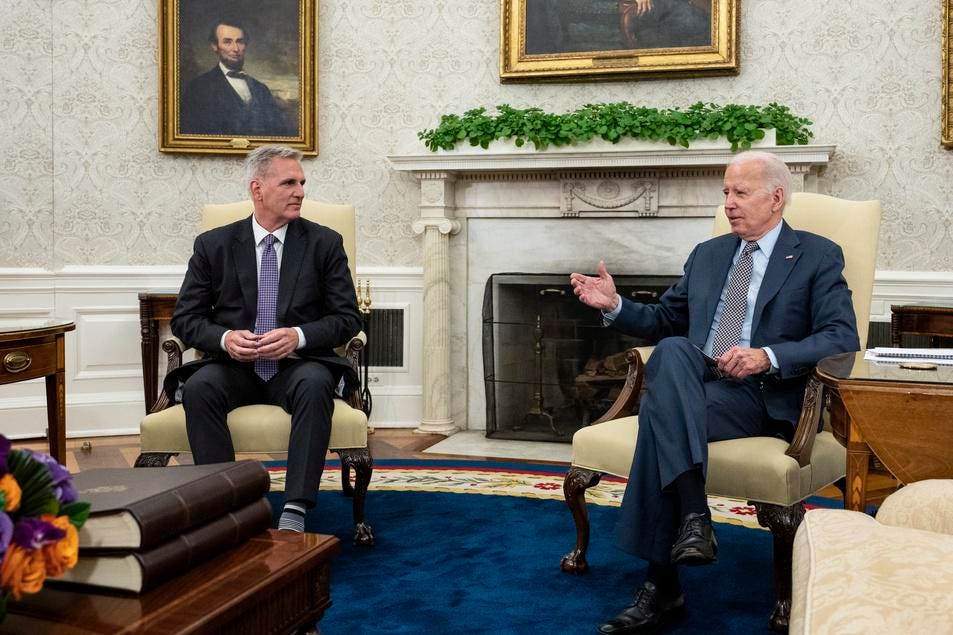It may be that the nearly last-minute debt deal has, at least for now, stopped the U.S. from careening into default. (Assuming that the various political factions don’t scuttle the agreement.)
Putting aside the question of whether the deal was good or not, the country still faces that such machinations became necessary. Republicans decided to twist arms to get what they wanted. Democrats didn’t address the upcoming problem — it’s always upcoming — when they had control of both houses of Congress.
An analogy is driving too fast on a winter road where there may be black ice ahead. You might start skidding and still steer things into stability. However, you can’t guarantee your ability to always come to your own rescue. Take the chance often enough and one day you will spin out of control and hit someone or find the vehicle sliding sideways toward, and maybe over, the edge of an embankment.
The best answer would be caution and prudence. If you had to travel by car on such a day, you would plan and drive more slowly while carefully navigating through curves and anticipating the needs to stop. Congress could take such a path, but it doesn’t.
Some argue that the U.S. could always print more money to cover debt and, so, entirely avoid the problem. But even if that were the case and it would be possible to avoid igniting levels of inflation that would incapacitate the economy, it still misses the fundamental issue. The easiest explanation is an analogy. This is one instance when likening a nation’s finances to that of a family or individual becomes reasonable.
To sanely undertake any purchase, a person or entity passes through three distinct steps. One is to decide to purchase something. Second, be sure that you can afford to do so. Third, you bring the payment and place the purchase.
That first part, deciding to pay for a product or service, isn’t straightforward. Someone might by a necessary item after planning and budgeting, or they could also make an impulse purchase. A purchase could go onto a credit card for later payment, but the buyer must recognize and demonstrate the availability of sufficient credit before a transaction clears.
The same is true for Congress, so long as one faction or other can cobble together enough votes in both chambers to pass the measure and then appropriate the funds, with a federal agency doing the actual spending. Unlike a family or individual, a country with its own currency doesn’t have to undergo a check with a credit card network to see if it has enough credit to make a purchase. The country decides itself whether it will further borrow and authorizes its own credit.
But the total purchase process shattered at one point. The decision to spend and to decide to do so out of cash through credit is bifurcated. The U.S. places all its orders and then, at some point, is told that it is reaching its credit limit for all those previous purchases and then must decide whether to increase its own limit to make good on the past purchases.
It wasn’t always like this. For more than a century there was no debt ceiling for the U.S. For the Treasury to issue a bond, Congress had to authorize it, including why it was done and setting such terms as rates and maturities, according to the Bipartisan Policy Center. In 1917, the Second Liberty Bond Act gave the Treasury more flexibility, but Congress still had to agree to the mix of debt instruments being used. The next big change came in 1939 when Congress finally set a single debt limit, allowing the Treasury to make its own decisions while imposing a total cap on debt.
Giving the Treasury the flexibility to manage money that the combination of Congress and the executive branch spend makes sense. The trouble comes when Congress ignores where things are, except at times when a group decides to use an impending debt limit as a weapon of extortion to twist the arms of others to try and change the past.
The control of spending as part of managing debt would be a prudent action, but it needs to be ongoing, happening at the time Congress decides to have the Treasury write more checks—or flash the credit card. Not to have the Treasury ask every time whether it can issue debt, but to look at the debt tally, add what has been approved so far during the year, and see where the debt limit stands today, not at a panicked time in a year or two. Pull back on spending if that is wise, though recognize and admit when that is a backhanded way to change previous policies that a minority group didn’t like.
Over time, such an approach will help bring greater fiscal control back to the country without the threat of a national and global financial meltdown.
Read the full article here











